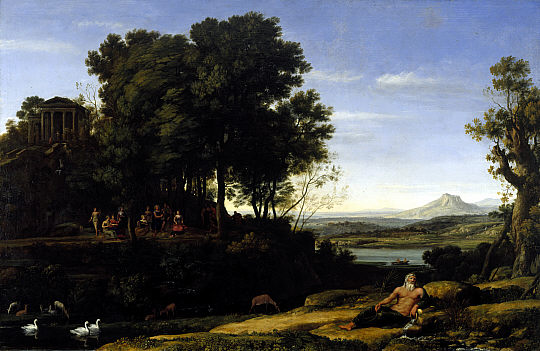The second of August’s four summer pictures from galleries around the country is Claude Lorrain’s evocation of classical antiquity basking in the perpetual sunshine of its Golden Age, Landscape with Apollo and the Muses.
Claude’s largest landscape composition, it was acquired in 1960 by the National Gallery of Scotland, where it may still be seen. The picture presents an image of unruffled peace and tranquillity but it has led a peripatetic and occasionally hazardous life and was once very nearly destroyed. Originally painted in 1652 for Cardinal Camillo Pamphili, one of Claude’s richest and most powerful patrons, it subsequently passed into the collections of the Muti family, where it was discovered in the middle of the eighteenth-century by the ribald caricaturist and occasional picture dealer Thomas Patch. He bought it from the Muti, exported it clandestinely from Rome and sold it on to Sir William Lowther, a scion of the Yorkshire aristocracy. The unfortunate Lowther contrived to die shortly before the greatest masterpiece in his collection arrived at his stately home of Holker Hall. Claude’s picture was to remain there, uneventfully, until the great fire of 1871, a vivid description of which is to be found in James Stockdale’s Annales Caermoelenses, or Annals of Cartmel. About 103 pictures were burnt, according to Stockdale, but 59 were “saved from the devouring element – some of them with great difficulty, and at the risk of the lives of those who were bold enough to venture among the flames”. Several paintings were apparently saved by being thrown out of upstairs windows, the most notable survivor being “Mount Parnassus; Apollo and the Muses; the river Helicon personified – Claude Lorraine – a priceless picture!”
Claude Gellee, known to the French as Le Lorrain, and to the English as Claude Lorraine, was...

ITP 69: Landscape with Apollo and the Muses by Claude Lorraine
12-08-2001

